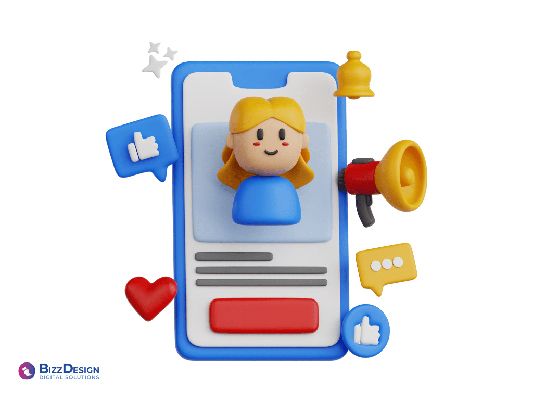
Navigating the Crossroads: Partnering with Influencers vs. Collaborating with Brands
The quest for brand visibility and consumer engagement has evolved dramatically in today's hyperconnected digital landscape. As business owners, entrepreneurs, and marketers navigate this ever-shifting terrain, one question looms: Should I partner with influencers or collaborate with other brands? This pivotal decision can significantly impact your brand's growth and reach trajectory. So, let's embark on a journey of exploration, dissecting the merits of each approach to help you chart a course that aligns with your goals and aspirations.
The Growth of Influencer Marketing
Influencer marketing has become a decisive element in digital advertising, utilising the influence of social media figures to impact consumer behaviour and enhance brand interaction. By partnering with influencers whose values and followers align with your brand, you tap into an established audience of dedicated followers keen to follow their suggestions and endorsements.
The Benefits of Partnering with Influencers
1. Authenticity and Credibility
Influencers often enjoy high trust and authenticity with their audience, making their endorsements more persuasive than traditional advertisements.
2. Targeted Reach
Influencers can target specific demographics and niche markets, allowing you to reach your target audience precisely and efficiently.
3. Content Creation
Influencers excel at creating engaging, visually appealing content that seamlessly integrates your brand message, enhancing brand visibility and resonance.
4. Social Proof
Associating your brand with trusted influencers provides social proof and validation, bolstering your credibility and fostering positive brand associations.
The Power of Brand Collaborations
While influencer partnerships offer undeniable benefits, collaborating with other brands presents unique advantages that should not be overlooked. Strategic alliances with complementary brands can unlock new opportunities for growth, innovation, and mutual benefit.
The Advantages of Brand Collaborations
1. Expanded Reach and Exposure
By joining forces with other brands, you can tap into their existing audience base, extending your reach and exposure to new markets and demographics.
2. Cross-Promotion Opportunities
Collaborations offer the chance to leverage each other's platforms and resources for mutual promotion, amplifying your message and driving engagement.
3. Innovating and Creating Together
Partnering with other brands can ignite creativity and drive innovation, resulting in distinctive products, services, or experiences that appeal to consumers.
4. Combined Resources and Knowledge
Sharing resources, expertise, and networks with other brands can reduce costs, improve operational efficiency, and open new markets or distribution channels.
Finding Your Ideal Path Forward
As you stand at the crossroads of influencer partnerships and brand collaborations, you must consider your unique objectives, target audience, and brand identity. While both approaches offer distinct advantages, the key lies in aligning your strategy with your overarching goals and values.
Essential Factors to Consider:
1. Brand Compatibility
Assess if the influencer or brand you plan to collaborate with resonates with your core values, mission, and intended audience. Authenticity is crucial for establishing trust and credibility with your consumers.
2. Goals and Evaluation Criteria
Clearly outline your goals for the partnership, such as boosting brand visibility, enhancing sales, or cultivating brand loyalty. Identify key performance indicators (KPIs) to gauge the effectiveness of your collaboration.
3. Long-Term vs. Short-Term Impact
Consider the long-term sustainability and impact of your partnership. While influencer campaigns may yield immediate results, brand collaborations can lay the groundwork for enduring relationships and sustained growth.
4. Budget and Resources
Assess your budgetary constraints and resource availability, considering the costs associated with influencer fees, product gifting, or co-marketing initiatives.
Case Studies: Learning from Success Stories
To glean insights into the effectiveness of influencer partnerships and brand collaborations, let's explore some notable case studies from the world of marketing:
1. Nike x Colin Kaepernick: Nike's partnership with former NFL quarterback Colin Kaepernick sparked widespread controversy and conversation, driving brand awareness and cementing Nike's position as a champion of social justice causes.
2. GoPro x Red Bull: GoPro's collaboration with Red Bull resulted in exhilarating content featuring extreme sports athletes, showcasing the capabilities of GoPro cameras while aligning with Red Bull's high-energy brand ethos.
3. Sephora x Instagram Influencers: Sephora's influencer marketing campaigns on Instagram have leveraged its visual storytelling capabilities to showcase its products in authentic, user-generated content, driving engagement and sales among beauty enthusiasts.
The Road Ahead: Embracing a Hybrid Approach
Ultimately, deciding to partner with influencers or collaborate with other brands need not be binary. In today's interconnected ecosystem, brands can embrace a hybrid approach, combining elements of influencer marketing and brand collaborations to maximise impact and reach.
By forming strategic alliances that resonate with your target audience and reflect your brand's core values, you can leverage the combined influence of partners and other brands, boosting your visibility, relevance, and success in the digital landscape. As you embark on your brand development and expansion journey, remember that your road to success is as distinctive as your brand. Make thoughtful choices, stay true to your vision, and let collaboration drive your rise to prominence.
